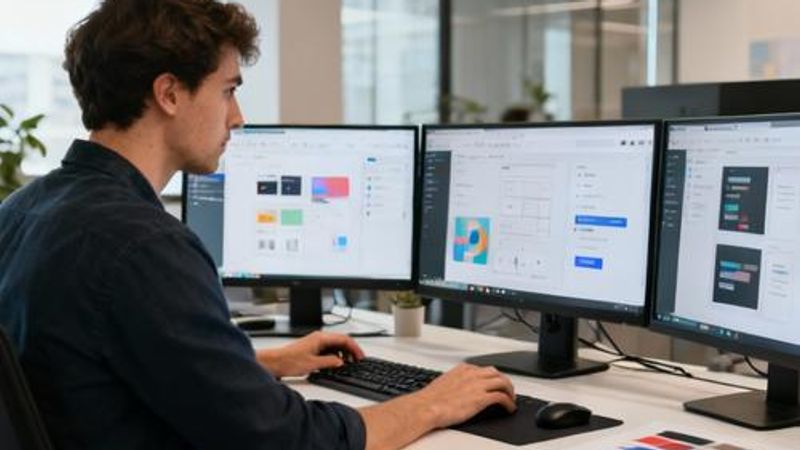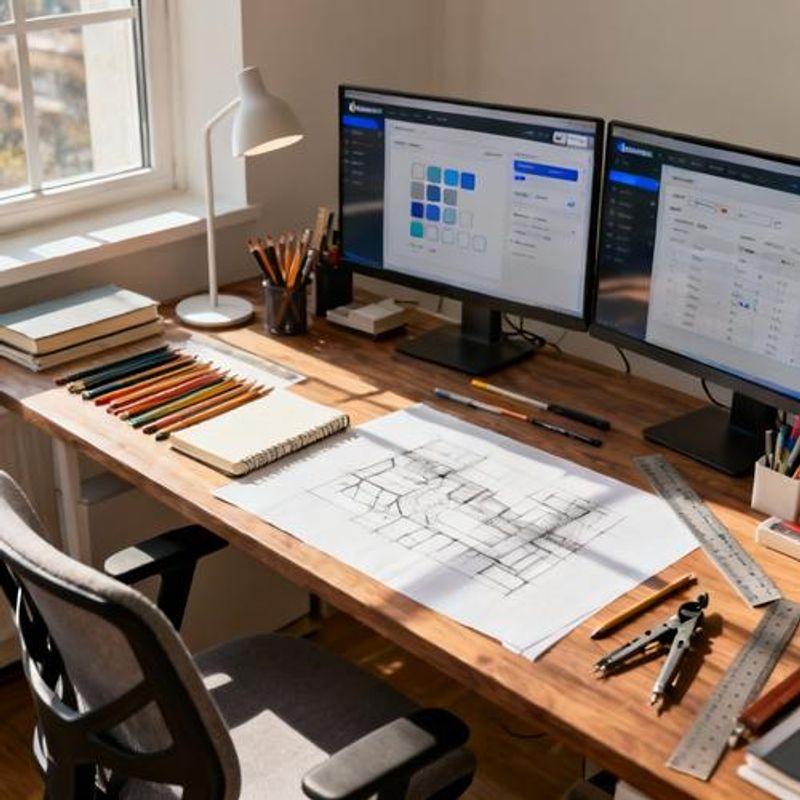The Rise of 'No-Code' Tools for Designers: How Mid-Level Creatives Can Build Without Coding

You've mastered the fundamentals of design, but now clients want interactive prototypes, functional websites, and app experiences that traditional design tools can't deliver alone. The rise of 'no-code' tools for designers is transforming how creative professionals bridge the gap between beautiful visuals and functional products—without writing a single line of code. This guide reveals which no-code platforms can elevate your design career and expand your service offerings beyond static mockups.

Why No-Code Matters for Mid-Level Designers
As a mid-level designer, you're caught in a frustrating middle ground. You have solid design skills and understand user experience principles, but you're limited by what static design tools can accomplish. Clients increasingly expect working prototypes, responsive websites, and interactive experiences that demonstrate real functionality. Traditional handoffs to developers often result in compromised designs, delayed timelines, and miscommunicated visions. No-code tools eliminate these friction points by allowing designers to create functional, interactive products while maintaining complete creative control.
Key Benefits: What No-Code Tools Unlock for Designers
The transformation from static designer to full-stack creative happens faster than you might expect. Here's what changes when you integrate no-code tools into your workflow:
- Deliver functional prototypes instead of static mockups
- Test real user interactions and validate design decisions
- Charge premium rates for end-to-end digital experiences
- Reduce dependency on developer availability and timelines
- Iterate designs rapidly based on real user feedback

Essential No-Code Platform Categories for Designers
Understanding which type of no-code tool serves which purpose prevents platform overwhelm and helps you choose the right solution for each project phase.
Visual Website Builders
Platforms like Webflow and Framer allow pixel-perfect design control while generating clean, responsive code. These tools feel familiar to designers because they operate on visual principles rather than code logic. You can create custom animations, responsive layouts, and interactive elements using intuitive interfaces that translate your design decisions into functional websites.
App Prototyping Platforms
Tools like Bubble and Glide enable designers to create functional web and mobile applications without traditional development. These platforms handle database management, user authentication, and complex workflows through visual interfaces. The learning curve is steeper than website builders, but the output is genuinely functional software rather than just prototypes.
Automation and Integration Tools
Zapier, Make, and similar platforms connect different tools and automate repetitive tasks in your design workflow. These become essential as you scale no-code projects, allowing you to synchronize data between design tools, client communication platforms, and project management systems without manual intervention.
Practical Implementation Strategy
Start with one platform that matches your current project needs rather than trying to learn multiple tools simultaneously. Most successful designers follow this progression:
Week 1-2: Choose Your First Platform
Pick one visual website builder based on your client base. If you primarily design marketing sites, start with Webflow. For more experimental or animation-heavy projects, try Framer. Spend time on the platform's official tutorials rather than jumping between YouTube videos.
Week 3-4: Build Your First Project
Recreate an existing design you've completed in traditional tools. This removes creative decision-making from the learning process and lets you focus on mastering the platform's interface and capabilities. Document the time difference between static design creation and functional implementation.
Month 2: Client Integration
Introduce no-code deliverables to existing clients as value-adds rather than charging premium rates immediately. Offer interactive prototypes instead of static ones, or provide basic content management capabilities for completed websites. This builds confidence and demonstrates value before adjusting your pricing structure.

Common Pitfalls and How to Avoid Them
Most designers make predictable mistakes when transitioning to no-code tools. Recognizing these patterns helps you avoid months of frustration and false starts.
Platform Jumping
Trying every new no-code tool instead of mastering one platform deeply. Each tool has unique logic and workflows. Surface-level knowledge of multiple platforms provides less value than deep expertise in one. Choose based on your client needs, not feature lists or community hype.
Overcomplicating First Projects
Attempting complex databases or intricate animations before understanding basic responsive design principles in your chosen platform. Start with simple, static-equivalent websites before adding interactive elements. Master the platform's design system capabilities before exploring advanced features.
Ignoring Performance and SEO
Focusing only on visual output without considering load times, mobile optimization, or search engine visibility. No-code platforms can generate bloated code if you don't understand their optimization features. Learn each platform's performance best practices alongside their design capabilities.
Your Next Steps: From Designer to Digital Creator
The rise of no-code tools represents the biggest opportunity for designers since the shift from print to digital. You already possess the visual thinking and user experience knowledge that takes developers years to acquire. Adding no-code capabilities to your skillset doesn't require abandoning your design expertise—it amplifies it. Start with one platform this week, commit to building one functional project this month, and begin offering interactive deliverables to clients within 60 days. The designers who embrace this transition now will lead the next generation of digital creative professionals. Ready to transform your static designs into living, breathing digital experiences? Choose your first no-code platform today and begin building the future of design.